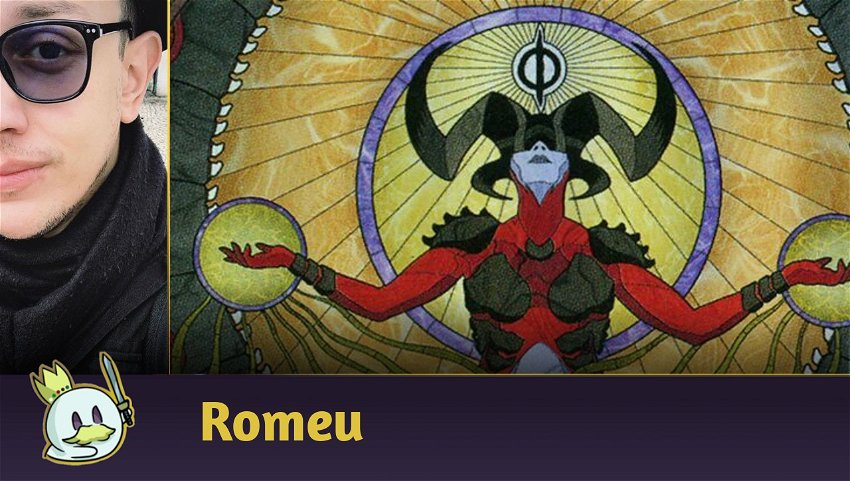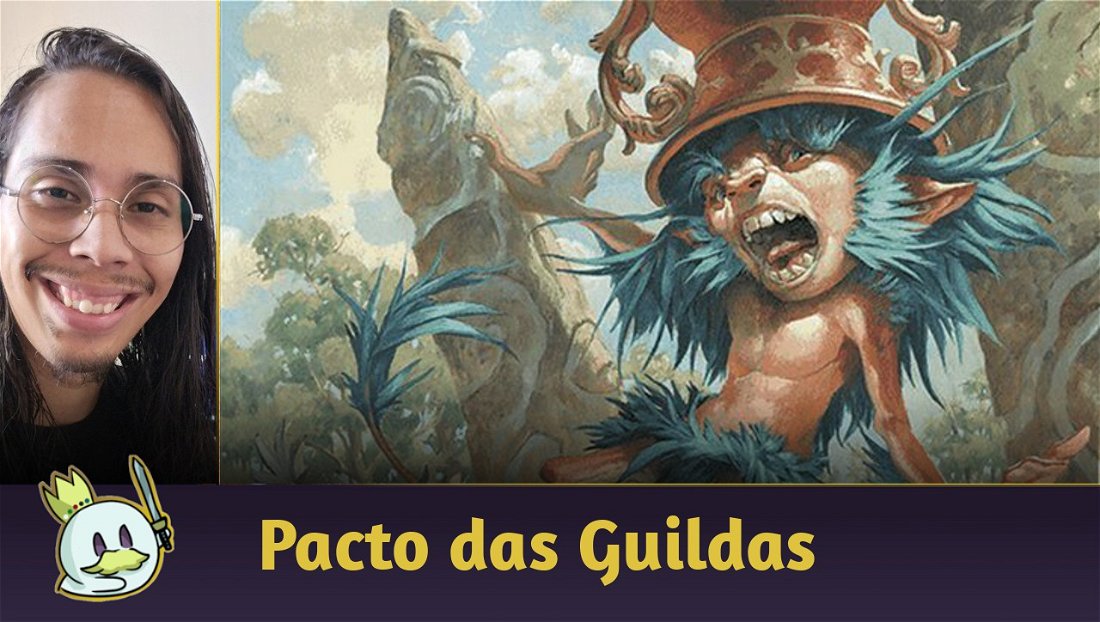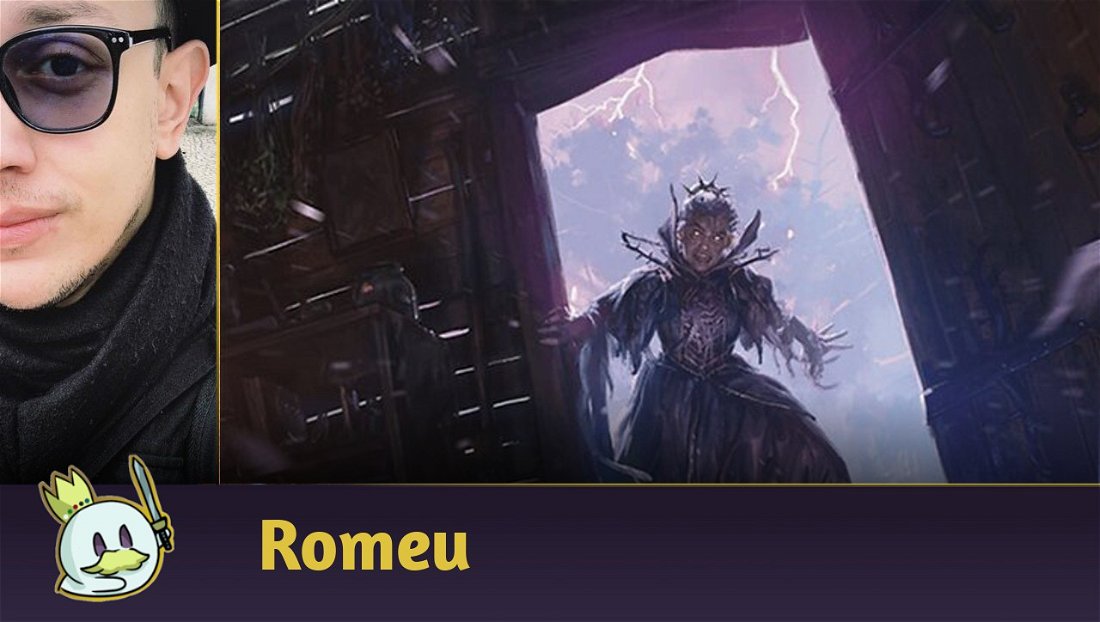There are just a few weeks left before the official release of Wilds of Eldraine, and while the new set looks promising for Standard, today the format lives a Metagame defined by an archetype, the Dimir Midrange.
Its combination of card advantage, efficient threats, and the inclusion of some of the best cards in the format, yielding a more comfortable mana base than the three-color variants, makes it the most suitable choice for today's competitive environment and ranked games.
Ad
In this article, I dissect the new version of Dimir Midrange, based on the winning list from the last Showcase Challenge, and evaluate which cards from the upcoming expansion might stand out in it.
The Decklist
The list below is based on the deck ran by kbol to win the Standard Showcase Challenge on August 19th.
While the rest of the format seeks adaptations to have a more efficient matchup against it, Dimir Midrange adapts to play the mirror, with more Planeswalkers and attrition cards to the detriment of other pieces that work in different Metagames.

A notable exclusion is Graveyard Trespasser, a creature that works as an efficient threat, lifegain and graveyard hate in a single slot, being a decent choice in several games. However, the current Metagame makes it less impactful, given that several lists have given up Gix's Command in favor of Sheoldred, a card capable of winning games on its own.
My version only runs a Sheoldred on the Sideboard, as the Magic Arena Metagame differs from Challenges, and we have a wider diversity of decks in it, with a greater presence of Aggro, and we've already made enough concessions for attrition games, with extra copies of Planeswalkers, to not want at least one Gix's Command in the maindeck to hold a full board.
This reasoning was also applied to the Sideboard, where Path of Peril and Parasitic Grasp come in to counter Aggro for enough turns until we can stabilize the game with Sheoldred, the Apocalypse.
Maindeck

Our first turns often revolve around casting one of these threats, followed by a removal for the turn before or after.
Evolved Sleeper is multifunctional on this list: for one mana, it's barely relevant, for two, it becomes a decent blocker against Aggro, and if we invest enough mana, we turn it into a source of card advantage. Therefore, whether on the first or tenth turn, this card will always have some use in the game.
Faerie Mastermind, in addition to being our only flying threat, is very well positioned in the current Metagame, where several cards from the main strategies today tend to draw additional cards on the opponent's turn, such as Spirited Companion, Wedding Announcement, Skystrike Officer and Raffine, Scheming Seer.

On the third turn, we want to play a Planeswalker and start extracting value from our opponent. Either through the disruption that Liliana of the Veil offers, or through a recurring card draw with Kaito Shizuki.
Keeping any of these cards on the board poses great risk to most opponents. Therefore, it is common for them to become pseudo-Time Walks as the game progresses.

Most of our wins revolve around Standard's current most powerful creature, Sheoldred, the Apocalypse. In fact, everything on this list seems compounded to amplify the Phyrexian praetor's abilities, given how many permanents and cards we run care about drawing cards or making the opponent draw cards.
Ad
Sheoldred is our main threat. If we untap with her, we need to extract as much value as we can, either with removals, or with our Planesewalkers, or through Evolved Sleeper and Faerie Mastermind.

Tenacious Underdog and Gix, Yawgmoth Praetor are other creatures that interact with Sheoldred, while also functioning as efficient individual threats. Gix, in particular, generates an insane amount of value next to Faerie Mastermind against most decks in the Metagame, which have very few flying creatures.

Our removals package.
There are times when I would like a fourth copy of Go for the Throat and/or Cut Down for Aggro matchups, but Standard is in a state where letting certain spells resolve is more important than removing them from the game later, so we should prioritize counterspells over removals.

And to make sure more problematic cards like The Wandering Emperor, Wedding Announcement, Breach the Multiverse and Atraxa, Grand Unifier don't put the opponent ahead, we have Make Disappear as our main counterspell, and one of which we can amplify the use thanks to the high number of creatures on our list, in addition to the tokens created by Kaito Shizuki.
Ertai Resurrected is one of the most efficient creatures in the current Standard, serving as an excellent answer both for a creature or Planeswalker that has already entered the battlefield, and to protect our plays from The Wandering Emperor or prevent the opponent from resolving a bomb.

Last but not least, Gix's Command is a flexible answer against many situations in an open Metagame: it is a sweeper and lifegain against Aggro, an efficient removal against Midranges, and recursion against Control. One could opt for a copy of Sheoldred instead, but The Brothers' War spell seems more efficient against an unknown field.

There's not much mystery in the mana base: a set of all 
Sideboard

Duress is the most flexible card on our sideboard: there are games where you want more or less copies of it based on what you see in your opponent's list. The best way to consider how many copies you need in Games 2 and 3 is to assess what options on your opponent's sideboard you can discard with them, or what key pieces of their maindeck are likely to be discarded.
Disdainful Stroke is a clean answer to archetypes looking to increase the mana curve gradually, and has a wide range of legal targets in the current Metagame, whether with threats such as Atraxa, Grand Unifier and Sheoldred, the Apocalypse, to answers or problematic cards like Sunfall and Serra Paragon.
Ad
The lone copy of Negate is due to situations where we need to protect our threats or need to deal with a cheap late-game key card like Wedding Announcement.

Our anti-aggro package.
The inclusion of Path of Peril instead of Glistening Deluge is mainly because it has a wider reach: from common targets such as low-cost Soldiers, Mono Red Aggro creatures, even some early-game Esper Legends threats, while it has the flexibility of also dealing with the tokens created by cards like Herd Migration and Hallowed Haunting.
I'd like to add one more copy of Parasitic Grasp, however it seems too conditional for a Metagame that isn't ruled between Aggro decks. Its inclusion instead of the fourth copy of Cut Down is due to the "extra turn" it gives with its lifegain, which often means the turn you need to cast Gix's Command and stabilize.
And speaking of Gix's Command, despite its flexibility, it is more common to run it against Aggro due to its sweeper mode and Lifegain.

Our attrition package.
The maindeck is already well-prepared for these games, so we don't need to dedicate as many slots to handle them. However, both Phyrexian Arena and Sheoldred are essential to keep up the pace in games 2 and 3.
Sideboard Guide
Dimir Midrange
IN

OUT

Esper Control
IN

OUT

Azorius Midrange
IN

OUT

Azorius Soldiers
IN

OUT

Mono Black Midrange
IN

OUT

Selesnya Enchantments
IN

OUT

Mono Red Aggro
With Wrenn's Resolve and Burn
IN

OUT

With creatures and Thundering Raiju
IN

OUT

Orzhov Breach
IN

OUT

Atraxa Ramp
IN

OUT

Ad
Wilds of Eldraine Additions
As of this writing, previews for Wilds of Eldraine are still ongoing. Therefore, we don't have access to all the cards to evaluate which ones can find space in the Dimir Midrange.
Below are some options that might merit some testing on the archetype.

I don't think Dimir Midrange currently has enough enablers to make Beseech the Mirror a priority, but some of the other useful cards for the archetype create tokens or are of a permanent type that pay the Bargain cost, and having access to any card in your deck and casting it for free for four mana - much like Bring to Light - is a useful enough effect to deserve an honorable mention.

Lord Skitter, Sewer King is an excellent enabler for Beseech the Mirror, while also being decent on its own, and demanding an immediate response to not dominate the game on its own alongside removals and counterspells. So far, he's the best standalone black card from the set.

All of The Witch's Vanity modules are relevant, and that could be enough to earn it a slot or two should the Metagame become more aggressive.

A Last Gasp that turns into a Debtors' Knell late-game is powerful enough to become an excellent value engine. However, the fact that its removal is at sorcery-speed puts the enchantment in a sensitive position on Dimir lists.

Copying Sheoldred, the Apocalypse with Likeness Looter was certainly the dream of many players when the card was revealed. However, since it doesn't generate card advantage on its own, it seems less flexible than most creatures in the deck today, and its body is much less impressive when we want to press or block, but it deserves a test in the slots that currently belongs to Tenacious Underdog.

Talion, the Kindly Lord is an interesting sideboard piece against lists that have a very tight mana curve. Unfortunately, it doesn't look as good against most of the format today and competes in mana values with Sheoldred, the Apocalypse and Ertai Resurrected.

Our early-game is pretty proactive with Evolved Sleeper, Faerie Mastermind and Planeswalkers, so I don't think The Irencrag deserves a spot on the list unless we're forced to raise our mana curve while slowing down our early game. However, we cannot ignore that The Irencrag is the first two-cost unconditional mana rock in many years.
Conclusion
Dimir Midrange is currently the best deck in Standard, and while the Metagame is still looking for ways to adapt to it, Wilds of Eldraine will bring a significant portion of new cards to different strategies while, so far, it doesn't seem to further solidify its position in the Metagame.
By all indications, it will still be one of the main competitors after the new expansion, but it may lose the space of "absolute best strategy" that it retains today.
Ad
Thanks for reading!









— Comments0
Be the first to comment